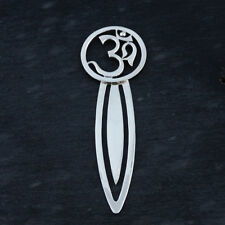
Meaning of Symbol Om: A Multidimensional Exploration
The symbol Om, often depicted as a three-part sound, is a deeply significant symbol in Hinduism, Buddhism, and Jainism. It is not just a religious symbol but also a representation of the universe and the essence of existence. In this article, we delve into the various dimensions of the meaning of Om, exploring its significance in different contexts.
Historical and Cultural Significance
 The symbol Om has been in use for thousands of years, with its origins traced back to ancient India. It is believed to be one of the oldest symbols in the world, with its roots in the Vedic period. The symbol is often found in ancient texts, temples, and artifacts, indicating its importance in the cultural and religious life of the people.
The symbol Om has been in use for thousands of years, with its origins traced back to ancient India. It is believed to be one of the oldest symbols in the world, with its roots in the Vedic period. The symbol is often found in ancient texts, temples, and artifacts, indicating its importance in the cultural and religious life of the people.
Om is considered to be the sound of the universe, representing the infinite and the eternal. It is often chanted during meditation and religious ceremonies, believed to bring peace, tranquility, and spiritual enlightenment. The symbol is also used in yoga, where it is believed to balance the mind, body, and spirit.
Symbolic Representation
 The symbol Om is composed of three distinct parts, each representing a different aspect of existence.
The symbol Om is composed of three distinct parts, each representing a different aspect of existence.
The first part, “A,” represents the creation of the universe. It is the sound of the universe coming into existence, the first vibration that sets everything in motion. The second part, “U,” represents the preservation of the universe. It is the sound of the universe maintaining its balance and harmony. The third part, “M,” represents the destruction of the universe. It is the sound of the universe returning to its source, the end of the cycle.
Philosophical and Spiritual Significance
 Om holds a profound philosophical and spiritual significance in Hinduism, Buddhism, and Jainism.
Om holds a profound philosophical and spiritual significance in Hinduism, Buddhism, and Jainism.
In Hinduism, Om is considered to be the ultimate reality, the Brahman. It is the sound of the universe and the essence of all existence. In Buddhism, Om is associated with the Buddha and is believed to bring enlightenment and wisdom. In Jainism, Om is considered to be the highest truth, representing the eternal and the infinite.
Om in Different Religions
Om is not exclusive to Hinduism, Buddhism, and Jainism. It has also found its way into other religions and cultures.
In Sikhism, Om is considered to be the name of God and is chanted as a form of worship. In Christianity, Om is sometimes used as a symbol of the Trinity. In Islam, Om is not used as a religious symbol but is sometimes found in Islamic art and architecture.
Om in Modern Life
In today’s world, Om has become a popular symbol, used in various contexts beyond its religious and spiritual significance.
It is often used in yoga studios, meditation centers, and wellness retreats. It is also used in jewelry, clothing, and other products. The symbol Om is believed to bring good luck, protection, and spiritual energy.
Conclusion
The symbol Om is a multifaceted symbol with deep roots in Hinduism, Buddhism, and Jainism. Its significance extends beyond its religious and spiritual meaning, influencing various aspects of life and culture. Whether chanted during meditation, used in religious ceremonies, or simply worn as a piece of jewelry, Om remains a powerful and meaningful symbol that continues to inspire and connect people across the globe.





